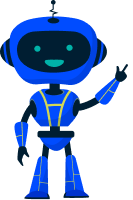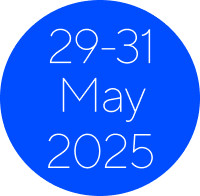Chair: Chanan Goyal (India)
Speakers: Sandeep Khanna (India), Tracey Smythe (United Kingdom), Ines Musabyemariya (Yemen)
- Discussion on practical applications of virtual reality and augmented reality technology in clinical settings and educational environments through case studies- By Chanan Goyal.
- Exploration of innovative technologies utilised by physiotherapists to enhance inclusion of children with neurodevelopmental disabilities in low- and middle-income countries (LMICs)- By Tracey Smythe and Ines Musabyemariya.
- Application of artificial Intelligence and other forms of innovative technology for smooth transition from clinic to classroom for children with neurodevelopmental disorders- By Waqar Mohsin Naqvi.
Neurodevelopmental disorders are prevalent worldwide. These conditions manifest with sensory-motor delay for which allied health services the mainstay of treatment. Incidence of cerebral palsy is 2-3 per thousand live births. Early identification, intervention and inclusion are global challenges for physiotherapists so as to lay a firm foundation for these children and their families to thrive, particularly in LMICs, where access to specialised services and resources is limited. Children with neurodevelopmental disabilities usually need life-long management. However, maintaining adherence to physiotherapeutic intervention is a challenge, that may be overcome if innovative technology is judiciously used [1]. Neurodevelopmental treatment (NDT) is an approach that is globally used for management of children with cerebral palsy (CP). However, there is a dearth of literature that reveals the impact of NDT on participation level of International Classification of Functioning, Disability and Health (ICF) [2]. Virtual reality intervention has displayed promising results in improving function of children with CP [3][4]. The symposium brings together experts in physiotherapy to explore the role of innovative technology in promoting the inclusion of children with neurodevelopmental disorders, integrating them from clinic to classroom.
Chair and first speaker, Dr. Chanan Goyal (contact- +919893000973) from India will introduce the session. She will discuss the use of virtual reality (VR) and augmented reality (AR) to improve outcomes in children diagnosed with cerebral palsy [5][6]. Transition of school-age children from the clinical setting to school will be demonstrated by photographic and videographic evidence that will showcase the phenomenon of inclusion through case studies.
Second speaker, Dr. Tracey Smythe (contact +44 (0) 20 79588333) from LSHTM (UK) and Stellenbosch University (South Africa) will provide an overview of the current landscape and the need for innovative solutions. She will be by sharing her work experience as paediatric physiotherapist at low-resource settings in sub-Saharan Africa and Latin America. Her wide global perspective will bring out the contrasts between both worlds.
Third speaker, Dr. Ines Musabyemariya (contact- +250788488510) will be addressing the challenges and opportunities for implementing technology-driven interventions in resource-constrained environments, offering practical strategies for sustainable impact with examples from Rwanda and Yemen. Besides, she will share ideas and experience of tapping the learning potential of children based on motor-learning principles by utilising cost-effective innovative technology.
Fourth speaker, Dr. Sandeep Khanna will highlight the emerging role of artificial intelligence in alternative augmentative communication and functional academics. He will share insights on utilising assistive technology, minimising architectural barriers and customising wheelchairs to foster inclusion in educational settings while facilitating participation which is the ultimate goal of physiotherapeutic intervention.
Inclusion in mainstream school and society will improve the quality of life of not only the child but of the family as a whole. Through interactive discussions and case studies, this symposium aims to inspire physiotherapists, clinicians, educators, policymakers, and researchers to collaborate towards inclusive practices that leverage the power of technology to transform lives.
- Goyal C, Vardhan V, Naqvi W. Virtual Reality-Based Intervention for Enhancing Upper Extremity Function in Children With Hemiplegic Cerebral Palsy: A Literature Review. Cureus [Internet]. 2022 Jan 28 [cited 2022 Mar 20]; Available from: https://www.cureus.com/articles/83559-virtual-reality-based-intervention-for-enhancing-upper-extremity-function-in-children-with-hemiplegic-cerebral-palsy-a-literature-review
- Khanna S, Arunmozhi R, Goyal C. Neurodevelopmental Treatment in Children With Cerebral Palsy: A Review of the Literature. Cureus [Internet]. 2023 Dec 12 [cited 2024 Apr 17]; Available from: https://www.cureus.com/articles/136866-neurodevelopmental-treatment-in-children-with-cerebral-palsy-a-review-of-the-literature
- Jha KK, Karunanithi GB, Sahana A, Karthikbabu S. Randomised trial of virtual reality gaming and physiotherapy on balance, gross motor performance and daily functions among children with bilateral spastic cerebral palsy. Somatosens Mot Res [Internet]. 2021 Apr 3 [cited 2022 Jan 5];38(2):117–26. Available from: https://www.tandfonline.com/doi/full/10.1080/08990220.2021.1876016
- Fandim JV, Saragiotto BT, Porfírio GJM, Santana RF. Effectiveness of virtual reality in children and young adults with cerebral palsy: a systematic review of randomized controlled trial. Braz J Phys Ther [Internet]. 2021 Jul [cited 2022 Jan 5];25(4):369–86. Available from: https://linkinghub.elsevier.com/retrieve/pii/S1413355520311321
- Goyal C, Vardhan V, Naqvi W, Arora S. Effect of virtual reality and haptic feedback on upper extremity function and functional independence in children with hemiplegic cerebral palsy: a research protocol. Pan Afr Med J [Internet]. 2022 [cited 2022 Aug 31];41. Available from: https://www.panafrican-med-journal.com/content/article/41/155/full
- Goyal C, Vardhan V, Naqvi W. Non-Immersive Virtual Reality as an Intervention for Improving Hand Function and Functional Independence in Children With Unilateral Cerebral Palsy: A Feasibility Study. Cureus [Internet]. 2022 Jun 19 [cited 2022 Aug 31]; Available from: https://www.cureus.com/articles/96861-non-immersive-virtual-reality-as-an-intervention-for-improving-hand-function-and-functional-independence-in-children-with-unilateral-cerebral-palsy-a-feasibility-study
- Naqvi WM, Sundus H, Mishra G, Muthukrishnan R, Kandakurti PK. AI in Medical Education Curriculum: The Future of Healthcare Learning. Eur J Ther [Internet]. 2024 Jan 30 [cited 2024 Apr 21]; Available from: https://eurjther.com/index.php/home/article/view/1995
See the 24 focused symposia to be presented at congress.
Find out who the key speakers at congress will be.
Find out which clinical topics will be covered in these discussion-based seminars.




